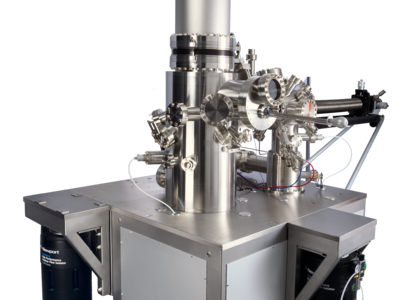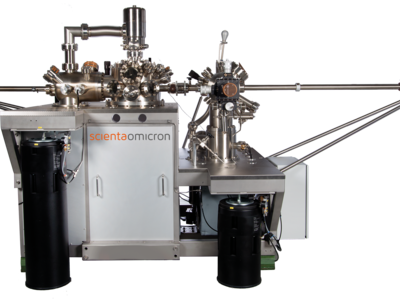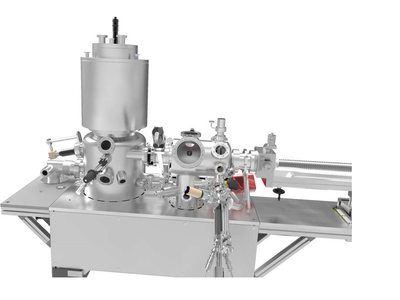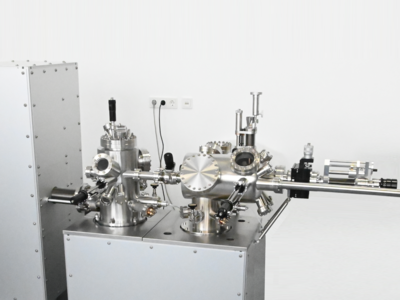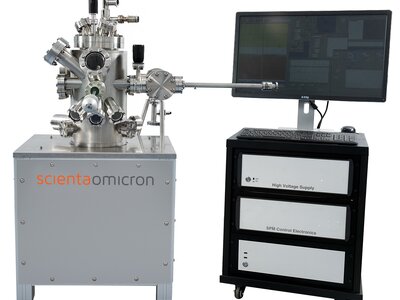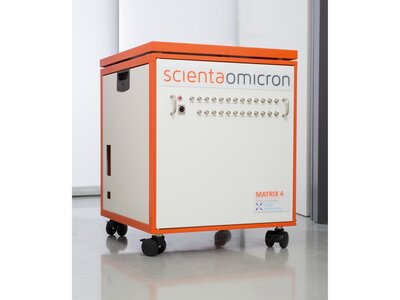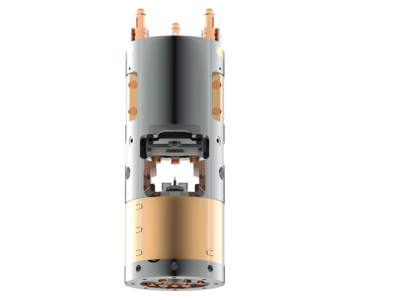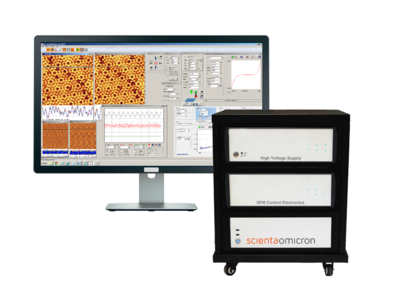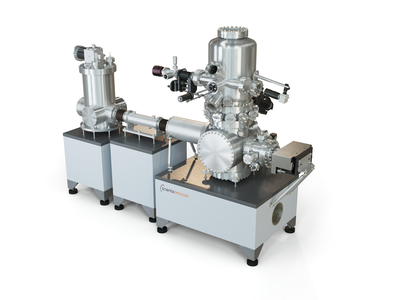Low Temperature Scanning Probe Microscopy
Scanning Probe Microscopy is the overarching name of an entire family of advanced microscopies, where the sample morphology is probed with a sharp metal tip on the nanometer length scale. The tip is scanned across the surface line by line, while simultaneously recording specific interactions between tip and surface. Thus, a scanning probe image records the magnitude of interaction as function of lateral tip position. These interactions include, for example, tunneling currents (scanning tunneling microscopy), short range van-der-Waals or dipole-dipole interactions (atomic force microscopy). They all have in common that they are heavily influenced by the local structure of the surface, e.g. the absence or presence of molecules or defects. It is routinely possible to achieve molecular, sub-molecular and atomic resolution with SPM techniques.
In many cases, the imaging quality is strongly enhanced by cooling the surface under examination to cryogenic temperatures. Then, atomic/molecular movement of the surface structures is heavily restricted, so that images of high quality can be obtained. Typically, either cooling with liq. N2 or liq. He cryostats (possibly with Joule-Thompson cooling) is utilized, allowing sample temperatures of ~77K and ~ 1K (or lower), respectively. At low temperatures, the scanning tips can be modified by attaching individual molecules to the end of the tip – this is a common way of obtaining extremely high lateral resolutions in atomic force microscopy (a prominent example for a scanning probe method).


